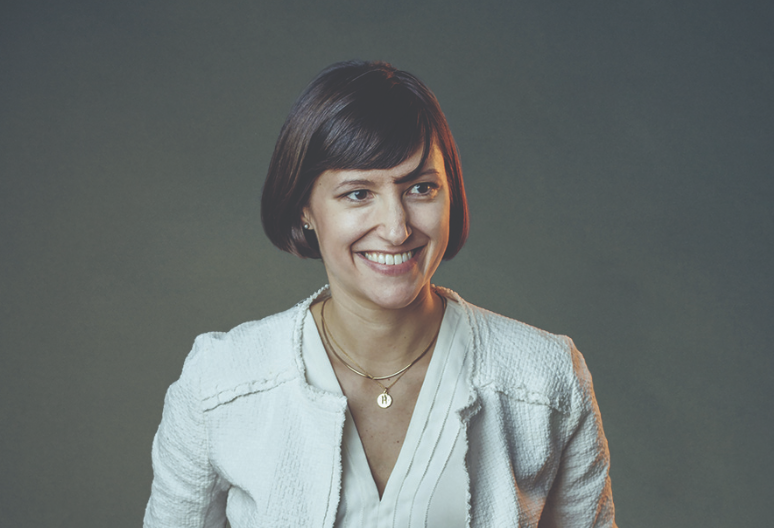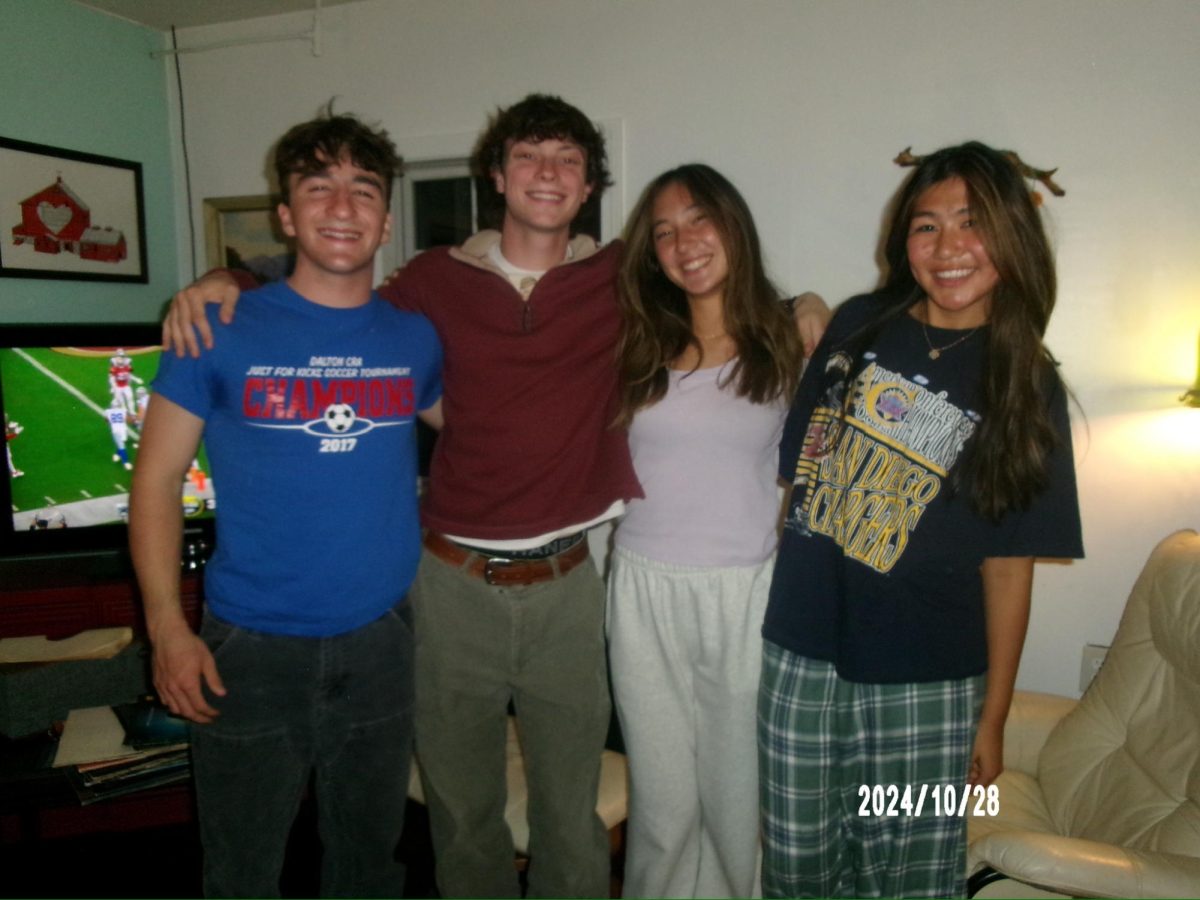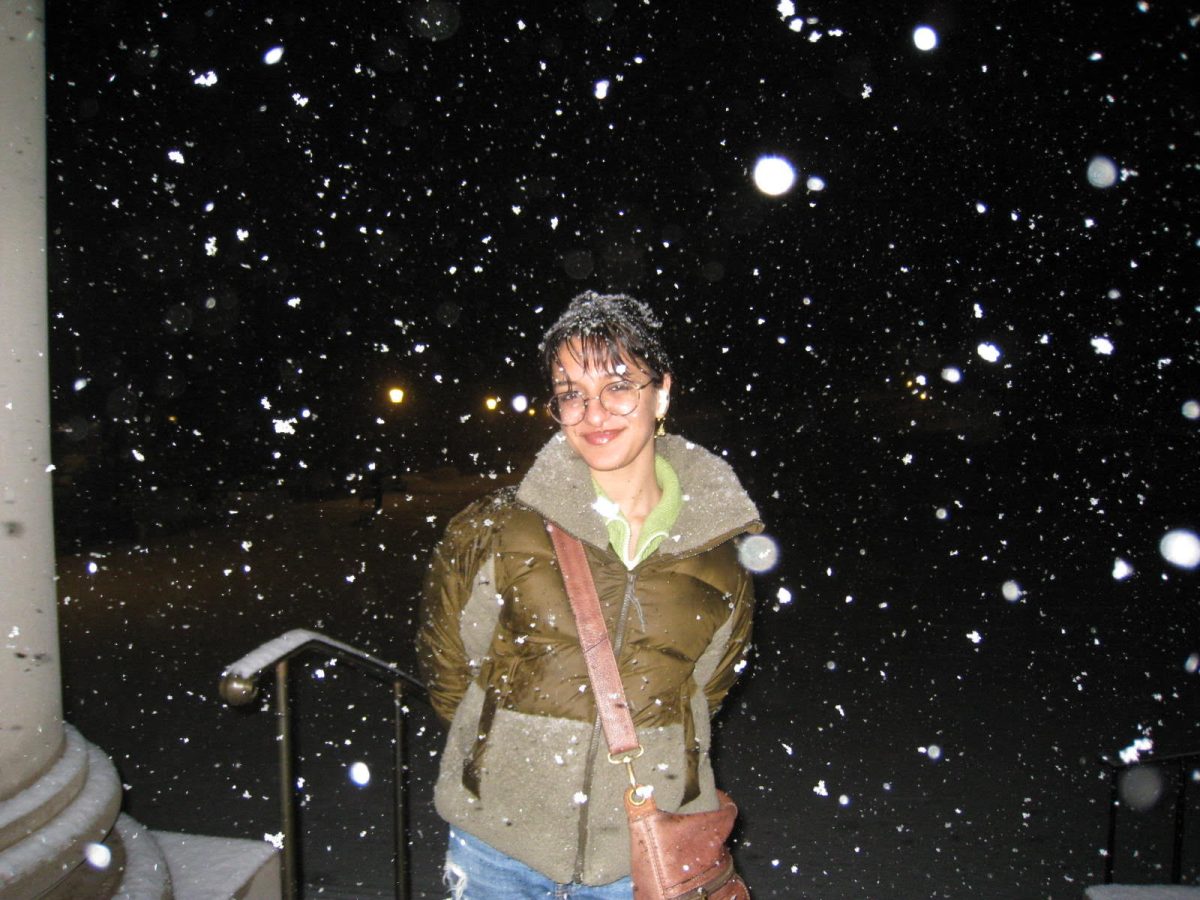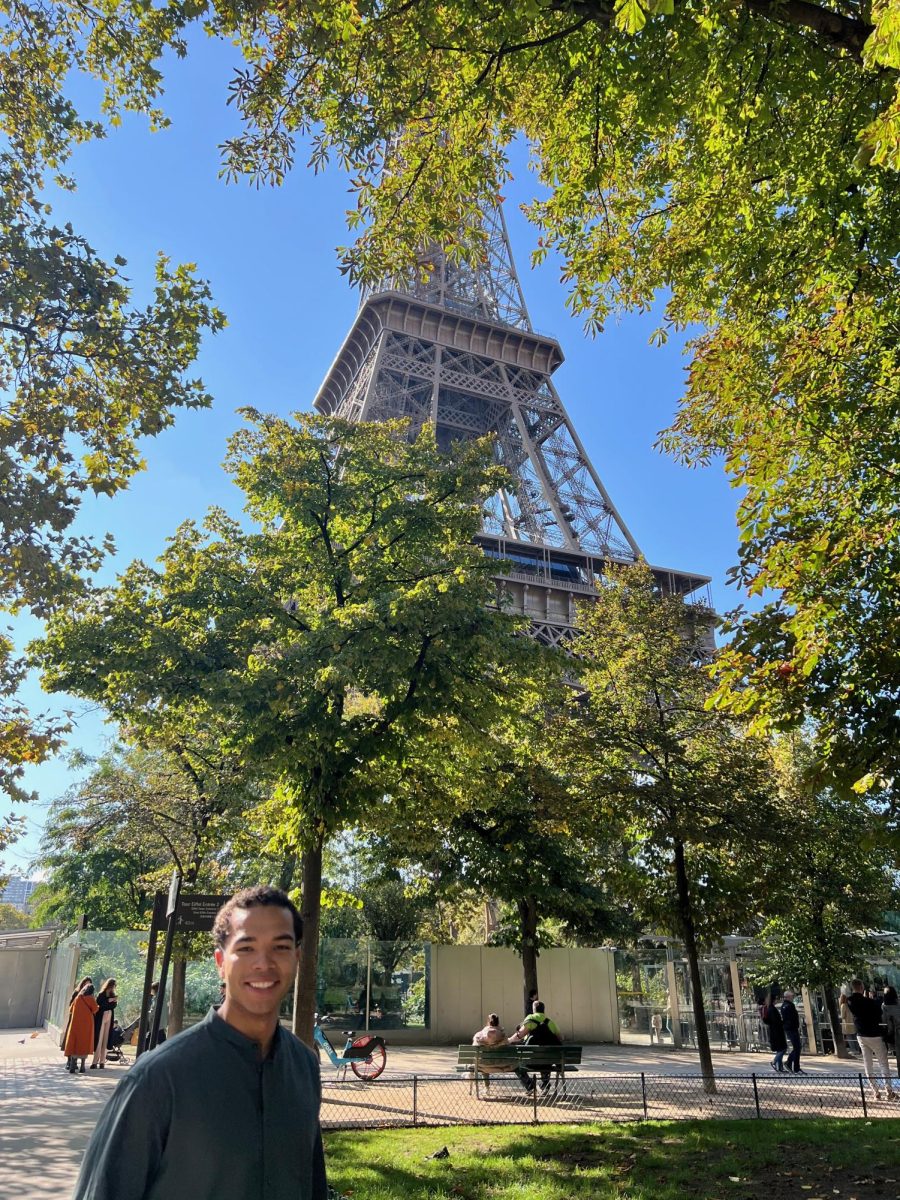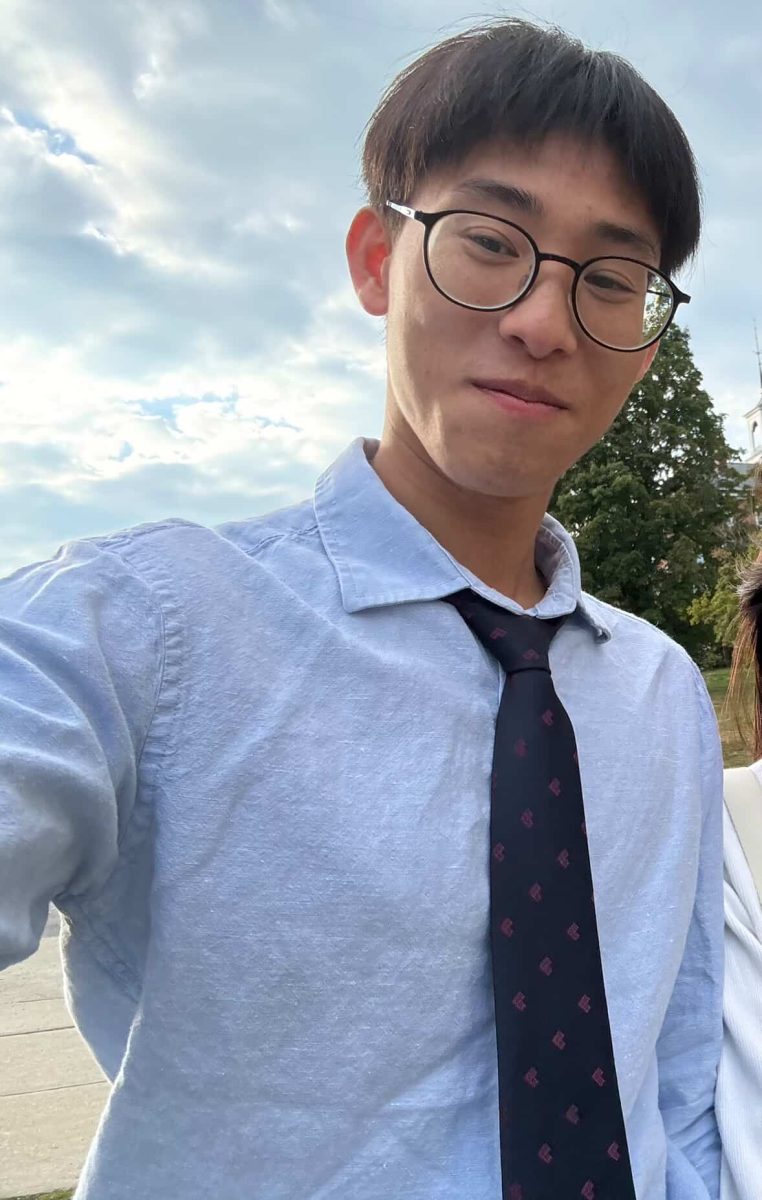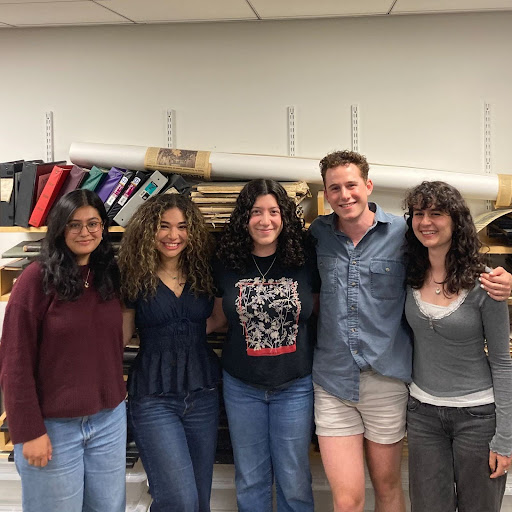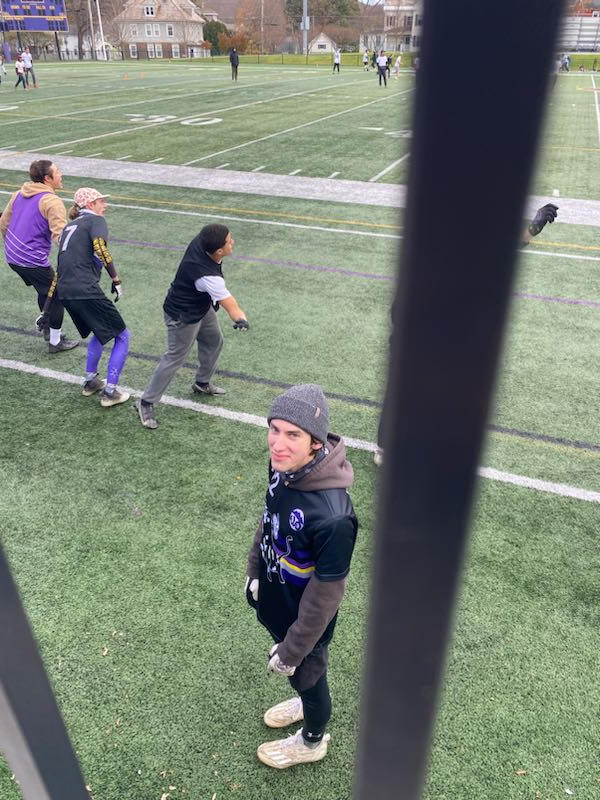
Each week, the Record (using a script in R) randomly selects a student at the College for our One in Two Thousand feature, excluding current Record board members. This week, Aidan Slovinski ’26 discussed the contemporary art market in Japan, inflation, “WUF time,” and study spots. This interview has been edited for length and clarity.
Megan Lin (ML): So you’re an art history and economics major, which is a fun combination. Tell me about the crossover.
Aidan Slovinski (AS): The crossover is actually pretty interesting. Julia [Clark ’25] and I, over Winter Study, went to Japan to research the Japanese contemporary art market.
ML: And how is it doing?
AS: It’s got a large export rate, and it’s growing rapidly. But at the same time, there’s very little acceptance of a lot of the more abstract craft movement within Japan itself. So you’ve got an interesting balance of a domestic art scene that is largely only being collected by foreign collectors.
A lot of the abstract contemporary art is kind of at odds with the traditional utility that’s pretty inherent to craft art in Japan. Art that uses a craft medium, say porcelain, but is incredibly abstract and unusable for a distinct function is seen as very at odds with its purpose, whereas foreign collectors don’t have that same ingrained notion of the medium or just don’t understand it at all. They see a pretty porcelain spear, and they don’t have any objection to that. But then you’ve also got some pretty significant economic factors like extremely unfavorable tax policy for collecting in Japan.
ML: What’s the unfavorable tax policy?
AS: Japan has an incredibly heavy tax rate on inheritance pieces, which makes it very difficult to write off art and art donations as tax deductible. Here in the U.S., art is basically a tax haven — I can buy a ton of art, be rich, give it to a museum, and receive a massive tax write off. That just isn’t the case in Japan, so you don’t really have a domestic collecting population that does so for investing purposes, which is probably a good thing for the longer term.
ML: If you were given an unlimited amount of money, what art would you buy?
AS: I would corner the market on Tetsuya Ishida.
ML: Fascinating. You wouldn’t buy, like, a Van Gogh?
AS: I don’t know. I feel like, anytime I want, I can go to a museum and see a Van Gogh. You know what I might do? The other option is I might buy one of Mark Rothko’s blue and green paintings. I’ve never seen a Rothko in person, and I feel like the thing with Rothko is that they’re so impactful in person. So if I had an unlimited amount of money, and I could experience a Rothko in person every day, that would be pretty interesting.
ML: You could buy all 115 Rothko’s in the Louis Vuitton Foundation exhibit.
AS: True. If I had an unlimited amount of money, theoretically I could buy every work of art ever. Except for the bad ones, I wouldn’t purchase those.
ML: What would you consider the bad ones?
AS: My truth is that I am not a huge fan of a lot of conceptual art.
ML: Okay, moving on to the econ side of things. Can you explain once and for all why we can’t just print more money?
AS: If we printed more money, then the money would become less valuable because there would be more of it.
ML: What if you just didn’t tell people you printed more money?
AS: It would just naturally occur. That’s why there was so much inflation in 2021, because in 2020, we printed so much money to stimulate the economy. Prices rise because you have more money and the same amount of produced goods: Because there’s more demand for them, their prices rise and that money becomes less valuable. Ultimately, you’re in a worse spot, because jobs generally don’t keep up-to-date on pay with inflation. So we’d print more money, but now your salary would be worthless. And then everyone would be very sad.
ML: When I was asking your friends about what I should ask you in this interview, they told me that I should ask about being chronically late to everything.
AS: Yeah. It’s a struggle.
ML: What’s the latest you’ve ever been to something?
AS: Absent. [Laughs.]
ML: Fair. What about a social thing?
AS: For our frisbee social gatherings, we have a phenomenon called “WUF time.” We run a little bit late. The latest I’ve been on WUF time was two hours.
ML: What’s the average conversion of WUF time to regular time?
AS: It varies for everyone. For me, it’s when I feel like it’s time to go — when my soul tells me it’s time to begin my night.
ML: What’s the earliest you’ve ever been to something?
AS: Two minutes early.
ML: That’s not very early.
AS: No, that’s not very early at all. In high school, for the first couple of years, my dad and I would commute into New York City together. My commute was about two and a half hours one way. I’d wake up at 5 a.m., leave my house at 6 a.m., and get there at 8:30 a.m. And I would always be so late leaving the house that we would end up getting to the train station right as the train was pulling in. Every single time, we’d be running for the train. My dad would always be saying, “Aidan, this is it. We can’t do this anymore. We have to be on time.” And you know what? I think we ran every single day for that train.
ML: Do you feel like that bonded you guys?
AS: Oh, definitely.
ML: Okay, what’s your favorite Spring Street establishment?
AS: My favorite Spring Street establishment is Tunnel City Coffee. I like the ambiance. I like how transitory a place it is. I like how there’s always people leaving it and coming in. It’s a very odd vibe.
ML: Why does its transitory nature excite you?
AS: I think because it makes me feel productive. I have a tier of places that I go to do work.
ML: What’s at the top?
AS: The tier list is my room first for the chillest work, and then Tunnel if I have to write an essay. After that, it’s probably the fifth floor of Sawyer Library, and that’s for when you really need to lock in. I go because they temporarily closed the 24-Hour Study Room past the library’s regularly-scheduled closing time. I used to be a big 24-hour room person. And then, after that — this gets even worse — there are a couple windowless rooms in the Hopper Science Center, and that’s the bottom tier, for if you really need to lock in.
ML: Have you been to the new 24-hour room in the basement of Hopkins Hall?
AS: No, because I’m not a psychopath.



